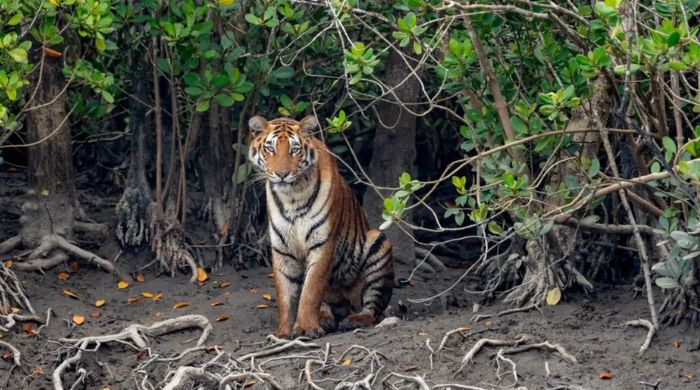DHAKA: The Sundarbans, a UNESCO World Heritage Site and the world’s largest mangrove forest, is a region that intertwines the threads of natural wonder and human history.
Spanning across southern Bangladesh and the eastern Indian state of West Bengal, the Sundarbans has long been a cradle of biodiversity, culture, and resilience. Its name, derived from the Sundari trees that dominate the landscape, encapsulates the unique ecosystem that has both nurtured and challenged the lives of those who inhabit its labyrinthine waterways.
The history of the Sundarbans is deeply tied to the dynamic forces of nature. Formed by the confluence of the Ganges, Brahmaputra, and Meghna rivers, the region is characterized by an intricate network of tidal rivers, creeks, and islands.
The geological evolution of the Sundarbans dates back to the Holocene epoch, when sediment deposition from these mighty rivers began creating the deltaic landscape that we see today.
This mangrove forest’s significance has been acknowledged since ancient times. Early records from the Mauryan and Gupta empires hint at the Sundarbans being a vital economic and trade region.
References in Hindu epics like the Mahabharata also speak of the delta’s mythological and spiritual importance. The dense forests were home to deities and legends, including Bonbibi, the revered protector of the forest and its people.
The arrival of colonial powers marked a turning point in the history of the Sundarbans. During the British era, the region’s vast resources, particularly its timber, were extensively exploited.
The colonial administration initiated large-scale deforestation and reclamation projects to expand agriculture and facilitate trade. This led to the displacement of indigenous communities and significant ecological degradation.
However, British rule also brought systematic documentation of the Sundarbans’ flora and fauna. Researchers and naturalists like William Roxburgh and Francis Buchanan-Hamilton cataloged the biodiversity of the region, laying the groundwork for future conservation efforts.
The Sundarbans is renowned for its extraordinary biodiversity. It is home to the iconic Royal Bengal tiger, along with species like the saltwater crocodile, Gangetic dolphin, and a myriad of bird species. This fragile ecosystem also supports livelihoods, with local communities relying on fishing, honey collection, and wood gathering.
Efforts to protect the Sundarbans gained momentum in the 20th century. The establishment of the Sundarbans Reserved Forest in 1875 marked one of the earliest attempts to regulate resource use. In 1987, the region was inscribed as a UNESCO World Heritage Site, recognizing its global ecological significance.
The Sundarbans has faced numerous challenges over the centuries, from colonial exploitation to natural disasters. Today, it grapples with the dual threats of climate change and human encroachment.
Rising sea levels, frequent cyclones, and erosion threaten to alter the delicate balance of this ecosystem. The devastating impacts of Cyclone Amphan in 2020 underscored the vulnerability of the Sundarbans and its inhabitants.
Conservation efforts continue to evolve, with governments, NGOs, and local communities working together to safeguard the region. Initiatives such as afforestation projects, eco-tourism, and wildlife protection laws aim to preserve the Sundarbans’ ecological and cultural heritage for future generations.
Beyond its ecological significance, the Sundarbans holds a deep cultural and spiritual resonance. The lore of Bonbibi and the rituals performed by honey collectors and fishermen reflect the symbiotic relationship between humans and nature in the delta. This cultural fabric emphasizes the importance of living in harmony with the environment—a lesson that resonates far beyond the Sundarbans.
The Sundarbans is not merely a natural wonder but a testament to the enduring interplay between civilization and the environment. Its history is one of resilience, adaptation, and reverence for nature.
As we look to the future, the Sundarbans stands as a symbol of the urgent need to balance development with conservation. Preserving this unique region is not just an ecological necessity but a moral imperative, ensuring that its historical legacy continues to inspire generations to come.












